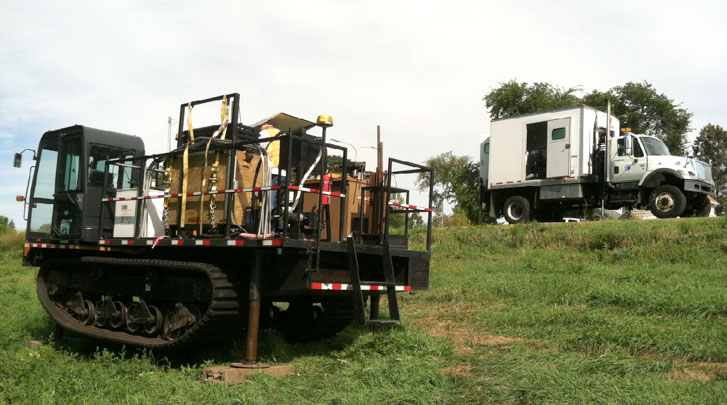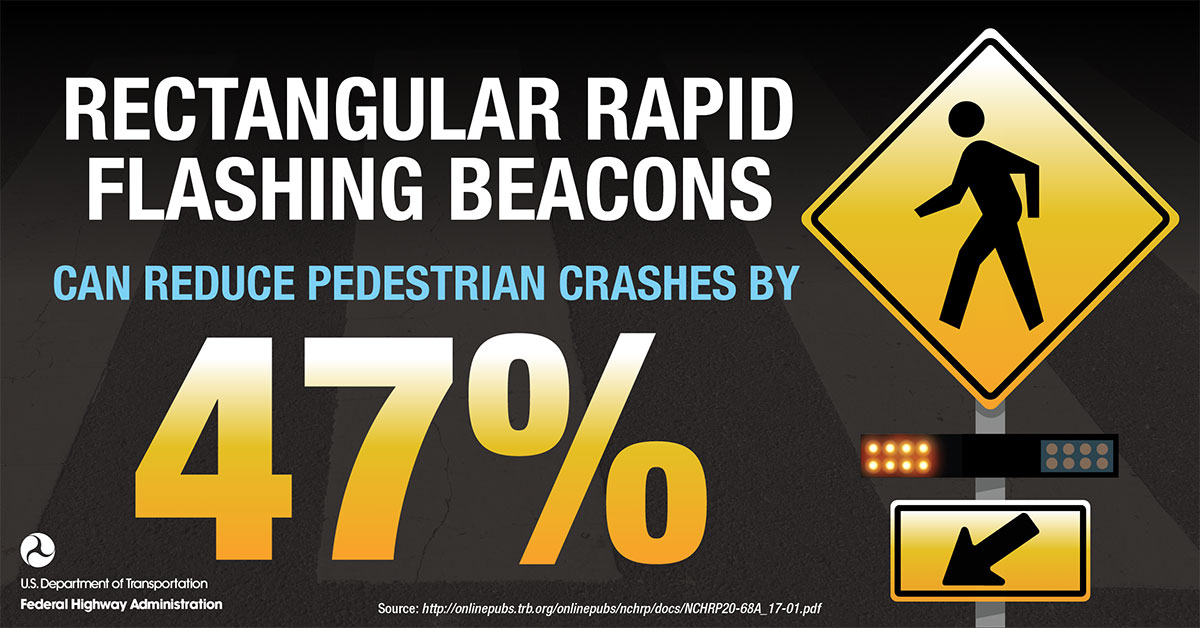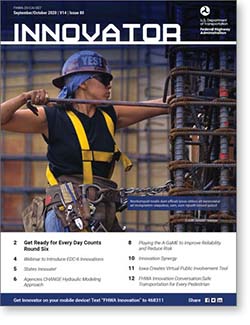October 15, 2020
Innovation of the Month:
Advanced Geotechnical Methods in Exploration (A-GaME)
Last week, we looked at how the Arkansas DOT successfully used geophysical methods to address slope instability along a roadway. Another proven, but underused exploration method being promoted by A-GaME is cone penetration testing (CPT). CPT provides geotechnical investigations with high measurement frequency for greater resolution of soil changes and high-quality data with minimal user dependency and error. CPT is commonly used for site characterization of soils for foundation design, settlement analysis, slope stability, and embankment design. CPT presents many advantages over traditional drilling including speed of characterization, repeatability, measurements that are more relatable to fundamental engineering relationships, and automated data acquisition.

The Minnesota Department of Transportation highlighted that field exploration costs for geotechnical bridge investigation projects have been reduced 30 to 70 percent by using a combination of CPT and standard penetration test (SPT) borings rather than SPT borings alone. The Indiana Department of Transportation reported that increasing use of CPT had led to a noticeable decrease in claims, change orders, and cost overruns.
The Vermont Agency of Transportation has successfully used CPT since 2005 to improve site characterization. Most recently, it was used on a bridge replacement project in an area with thick, soft clay soil, large embankment fills, and mechanically stabilized earth retaining walls. Using CPT testing on this project determined that the project's design seismic site classification was lower than expected and provided important information on the underlying soils.
This generated significant cost savings from not having to do further seismic testing and analysis and prevented unnecessarily conservative design and construction costs. Additionally, CPT provided better strength and compressibility parameters for the clay layers below the embankments and walls. This was instrumental in the settlement and stability analyses for the retaining walls and embankments as well as designing the piles for the bridge foundation.
The improved characterization of site conditions due to the use of CPT for this project enabled better design decisions early in the process, avoiding the need for additional investigation phases or schedule-impacting revisions later in the design process.
To learn more about cone penetration testing or other proven, innovative geotechnical methods, please contact Ben Rivers of the FHWA Resource Center or Silas Nichols of the FHWA Office of Infrastructure.
Unmanned Aerial Systems – Flood Response Tech Brief
Have you read the FHWA Tech Brief highlighting how unmanned aerial systems (UAS) are being used to respond to flooding events? UAS serve seven mission categories during flood events including:
- Strategic situational awareness, survey, and reconnaissance
- Detailed or structural inspection
- Ground search and rescue
- Water search and rescue
- Debris, flood estimation, and damage assessment
- Tactical situational awareness
- Material delivery
In the brief, you will learn more about these categories and primary use cases for UAS during flooding events.
To learn more about UAS and other innovative ways they are being used to support transportation agencies across the country, visit the UAS web page or contact James Gray of the FHWA Office of Infrastructure.
RRFBs Shed Light at Pedestrian Crossings
The Safe Transportation for Every Pedestrian (STEP) program promotes Rectangular Rapid Flashing Beacons (RRFBs) as well as other proven safety countermeasures for pedestrian crossings. STEP released an informational video summarizing the safety benefits of RRFBs and highlighting installations in Fayetteville, North Carolina. A short interview with staff from the North Carolina DOT provides an excellent overview of RRFB benefits. Also available is a STEP tech sheet that describes RRFBs and each of the STEP countermeasures.
If you would like more information on the STEP program, contact Becky Crowe with FHWA's Office of Safety or Peter Eun with the FHWA Resource Center.

Did You Catch the Last Innovator?
The September/October issue of Innovator is now available, accessible from any device! This new and improved format will optimize your reading experience, whether you access it from your mobile phone, tablet, or computer.
In this issue:
- Get Ready for Every Day Counts Round Six
- Agencies CHANGE Hydraulic Modeling Approach
- Playing the A-GaME to Improve Reliability and Reduce Risk
- Iowa Creates Virtual Public Involvement Tool
- And more...
Comments? Questions? We'd love your feedback! Drop us a line and let us know what you think.
Read past issues and sign up to receive Innovator by email here, or text "FHWA Innovation" to 468311 to get Innovator on your smartphone.
About EDC
Every Day Counts, a State-based program of the Federal Highway Administration’s Center for Accelerating Innovation, works with State, local, and private sector partners to encourage the adoption of proven technologies and innovations to shorten and enhance project delivery.



